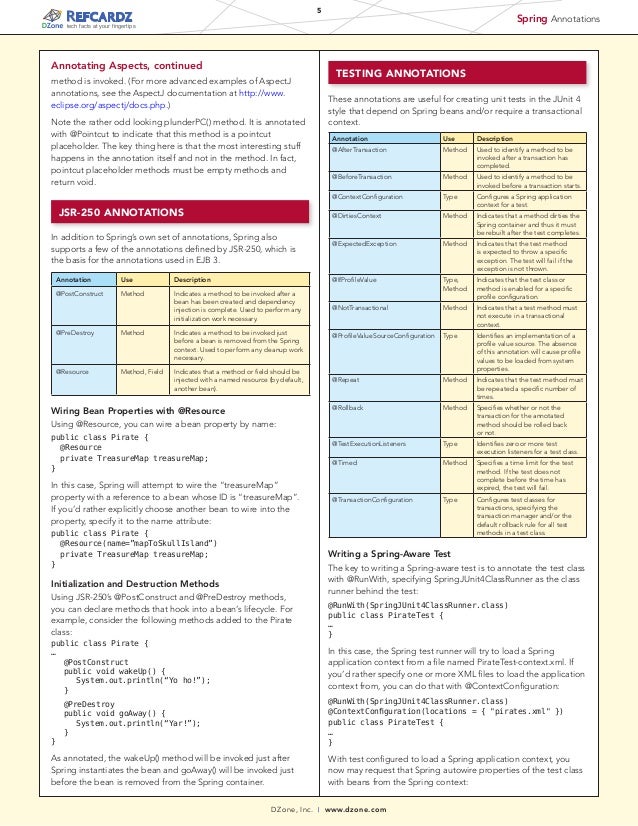
- SPRING ANNOTATIONS CANNOT FIND HOW TO
- SPRING ANNOTATIONS CANNOT FIND GENERATOR
- SPRING ANNOTATIONS CANNOT FIND MANUAL
- SPRING ANNOTATIONS CANNOT FIND SOFTWARE
SPRING ANNOTATIONS CANNOT FIND GENERATOR
Lombok is used as a boilerplate code generator and the lazy developer within you hopefully shouldn’t have a problem acquainting yourself with the library. As an example of a useful library, I’ll be using Project Lombok annotations in examples for the remainder of this article. So embrace the abstractions - the next time you are faced with a particular problem, do a quick search first and determine whether a library solving that problem is already integrated into Spring nowadays, chances are you’ll find a suitable existing solution.

If specified, kapt does not try to find annotation processors in apclasspath.
SPRING ANNOTATIONS CANNOT FIND MANUAL
There is a reason why abstractions and frameworks such as Spring exist, which is precisely to separate you from repetitive manual work and allow you to concentrate on higher level details– your domain objects and business logic. processors : A comma-specified list of annotation processor qualified class names.
SPRING ANNOTATIONS CANNOT FIND SOFTWARE
While understanding the internals of a particular library and its implementation is for the most part good and necessary (and can be a great learning process as well), it’s detrimental to your development as a software engineer to be constantly tackling the same low-level implementation details. Symptoms including regularly rewriting pieces of commonly used code and a lot of developers seems to suffer from it. On screen it shows as if it compiles neatly, but when attempting to run a test or to Build project it says: cannot find symbol. We’re hitting it off with this common mistake because the “ not invented here” syndrome is quite common in the software development world. Answered Stevenkuypers Created J02:51 All of a sudden, Intellij (version 2018.1.5, Linux) says it cannot find symbol for classes in javax.annotation (e.g. NoArgsConstructor will generate a constructor with no parameters. If you feel lost at any point during the article, I’d recommend cloning the repository and playing around with the code on your local machine. This set of 3 annotations generate a constructor that will accept 1 parameter for certain fields, and simply assigns this parameter to the field. In case you are not very familiar with Spring Boot but would still like to try out some of the things mentioned, I’ve created a GitHub repository accompanying this article. As Spring Boot’s website states, Spring Boot takes an opinionated view on how production-ready applications should be built, so this article will try to mimic that view and provide an overview of some tips which will incorporate well into standard Spring Boot web application development. In this article we’ll cover some of the more common mistakes in Spring, specifically oriented towards web applications and Spring Boot. While its basic concepts are fairly easy to grasp, becoming a strong Spring developer requires some time and effort. Spring is arguably one of the most popular Java frameworks, and also a mighty beast to tame.

SPRING ANNOTATIONS CANNOT FIND HOW TO
We learned how to use annotation in various ways. My advice for the simplest way to get to a working Spring MVC App: Install Spring Tool Suite IDE and create a Spring Template Project of Type MVC. Also, you don’t need to use with Spring 5. This approach allows the value to be set through a constructor. class "$ Code language: JavaScript ( javascript ) We can access all of these properties values in our spring boot application as shown below. = 10000 Code language: JavaScript ( javascript ) To demo this, let’s set up an application with some sample property values. The annotation is the easiest way to inject values into primitive fields. The Field required a bean of type that could not be found error in a Spring application typically indicates that the application is trying to inject a. It comes with some powerful features which we will explore in this tutorial.

The annotation is the quickest way to access the application.properties values in Spring Boot.


 0 kommentar(er)
0 kommentar(er)
